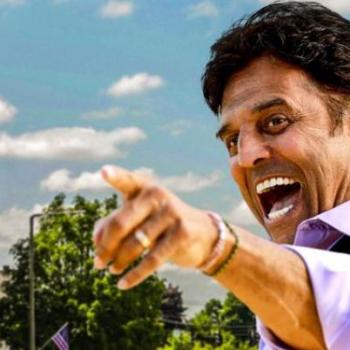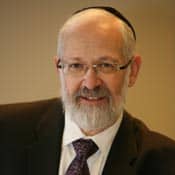Author's Note: Patheos' editors asked various writers for an honest overview of the issues and challenges facing each contributor's own faith group. What follows was my submission.
When Yogi Berra heard that Robert Briscoe, a Jew, had been elected Lord Mayor of Dublin, he reportedly exclaimed, "Only in America!" To the astonishment of many, the most traditional forms of Judaism have grown explosively in recent decades around the world, but in the United States in particular. That growth, as well as what others hail as the greatest blessings of the American experience, now pose challenges to Orthodox Judaism—especially here in America.
Very few people expected Orthodox Judaism to survive in America, let alone thrive. Both Reform and Conservative Judaism saw the Orthodox lifestyle as hopelessly mired in the past, and believed that it was doomed to die of attrition.
They were both wrong. Orthodoxy is still the smallest of the three major "denominations" of Judaism, but it is the fastest growing. In fact, it is the only one that is growing. By now, even in absolute numbers, when you consider the youngest cohort of the Jewish population measured in some polls (20-35), Orthodoxy is the largest group. The double-whammy of galloping intermarriage and smaller family size (well below the zero population growth number that allows a group to hold its own) dooms the other denominations to ever-shrinking numbers, while the continued large size of families predicts continued large growth for Orthodoxy.
Even more surprising to some is that Orthodoxy's success has little if anything to do with a new generation learning to bend the rules. Roughly, American Orthodoxy comes in two major varieties. While Modern Orthodoxy has made its peace with much of the contemporary cultural surroundings, the other group has not. Yet, both of them have prospered, including Jews to the right on the religious continuum (including haredi and hassidic Jews) who place greater emphasis on distinctive dress, cultural isolation and autonomy, and fervor in their religious expression. Orthodoxy's success, at least as seen from the inside, has more to do with the appeal of its message and lifestyle: constant connection with G-d, an all-encompassing lifestyle and worldview, great success in preserving the nuclear family, enormous intellectual content, and celebration of the law, rather than chafing under it.
Orthodoxy's astronomical growth has been a boon and a bane. On the one hand, Orthodox Jews have created communities in many large and not so large communities that are self-contained, offering amenities unheard of "in the old country." All Orthodox Jews send their children to religious schools through high school, and usually years beyond. Today, parents in most communities have multiple choices on all levels for the schooling of their kids. They have even more options when it comes to kosher food. The New York State Concord and Malaga of a generation have been replaced by good varietals. Boiled chicken has given way to Italian, French, Thai, Chinese, and fusion menus with upscale service on Kosher Restaurant Ways in several cities. New York's Lower East Side still has a thriving Orthodox community, but the grandchildren of those who lived in its tenements now often occupy elegant homes in communities that used to be closed to Jews.
All parts of the Orthodox community have had to deal with the problems common to other American religious groups. An increase in the divorce rate (although still a fraction of what it is in the general population or in the non-Orthodox Jewish world) threatens families. Too many people are crushed by the effects of the recession. (Large Orthodox families are especially vulnerable, because Orthodox children always attend religious schools. Tuition costs have skyrocketed; even families with two strong breadwinners are feeling the crunch.) As a more traditional religious group, Orthodoxy has only recently woken up to the instances of domestic and sexual abuse in its midst, and must still learn to deal with it.
Still, Orthodoxy seems to be in a much better place to deal with the problems that are common to all Americans, because it has something to say about every single facet of life, and provides guidelines and boundaries for all sorts of behavior. When it is embraced and understood, it works well. Its message does not have to be reinvented every few decades. Inter-generational transfer is smooth; young people do not question its relevance. If they drop out, they do so for different reasons.
Success, however, has also bred complacency in the community, which threatens to erode some of the gains of the past. Orthodoxy's growth produced an unhealthy overconfidence that the growth of the last decades would continue as a matter of course. People turned a blind eye to the real differences between the previous few generations and that of today.





